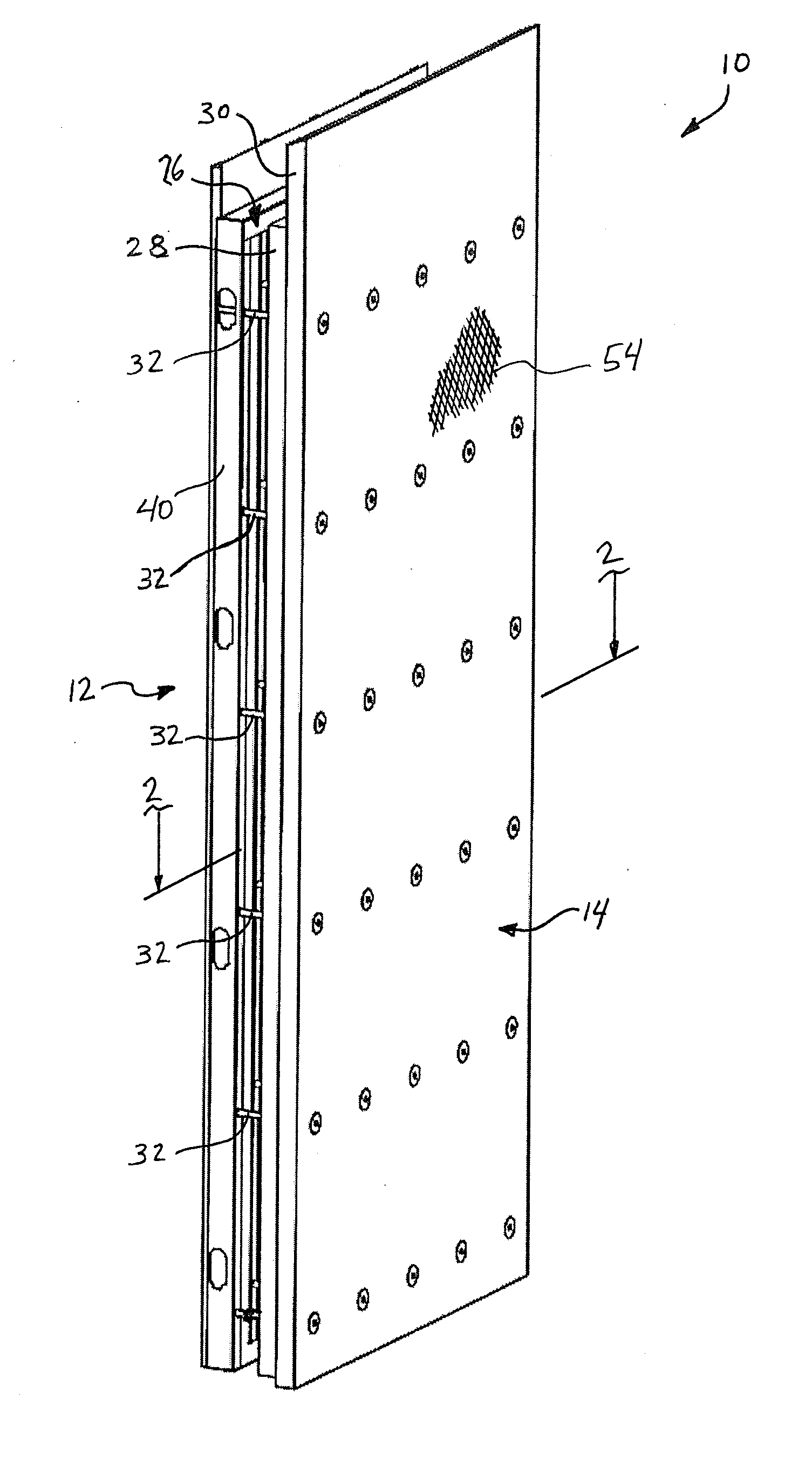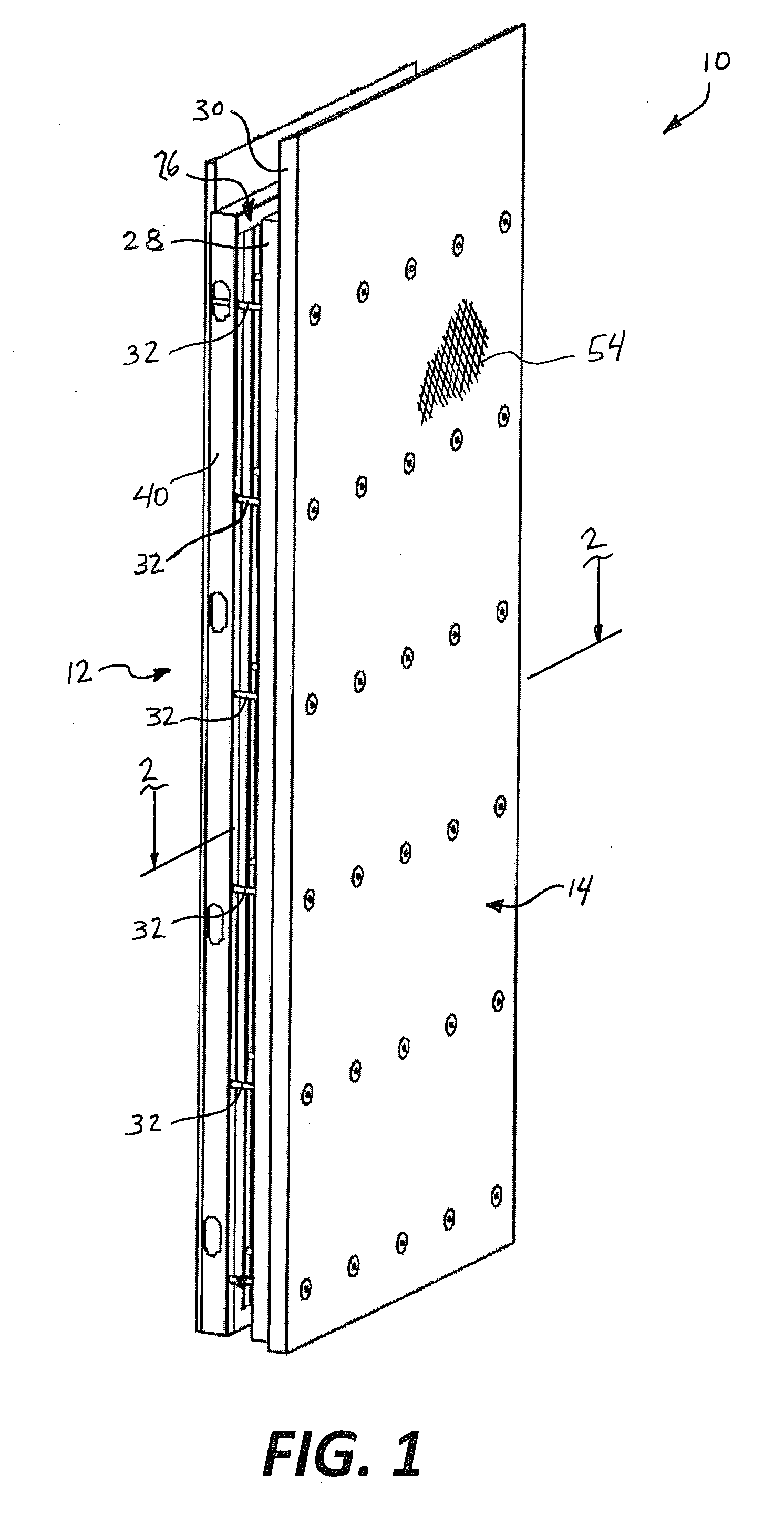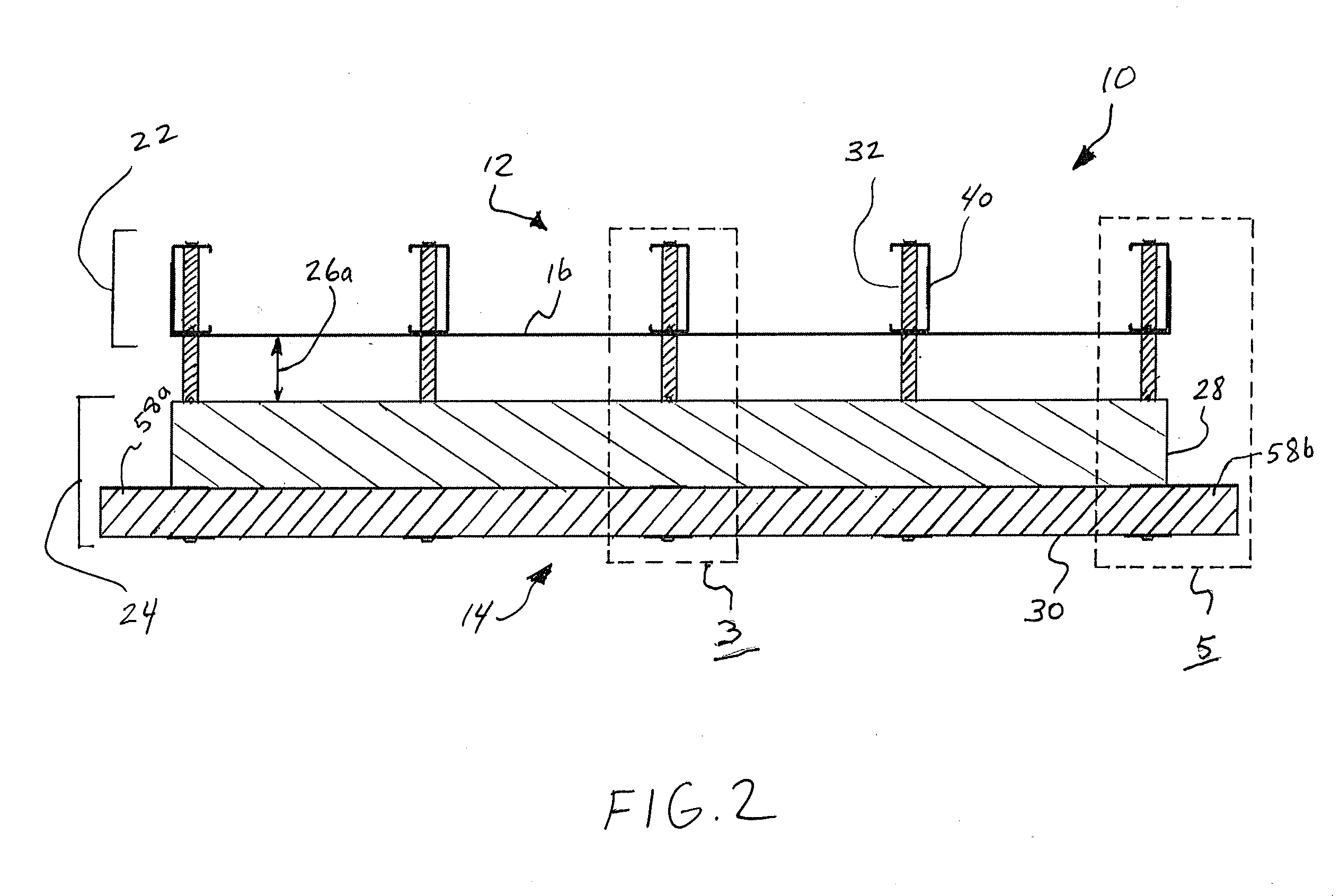Modular concrete form panel
a concrete form and module technology, applied in the direction of walls, thin material handling, constructions, etc., can solve the problems of high labor intensity, high labor intensity, and burdensomeness of assembling the initial concrete formwork, and achieve the effect of reducing labor intensity, costing a lot of time, and reducing labor intensity
- Summary
- Abstract
- Description
- Claims
- Application Information
AI Technical Summary
Benefits of technology
Problems solved by technology
Method used
Image
Examples
Embodiment Construction
[0029]Referring now to the drawings, an embodiment of a modular form panel is generally illustrated in FIG. 1 and is designated by the numeral 10. Modular form panel 10 includes an inner side 12 and an outer side 14. Inner side 12 may be referred to as an inner panel section 12. Outer side 14 may also be referred to as an outer panel section 14. Panel 10 provides a modular component that can be combined with additional panels to form a form for pouring concrete at a construction location. A filling gap 26 is defined between the inner and outer sides 12, 14. Filling gap 26 defines a void between inner and outer sides 12, 14 into which concrete may be poured. Inner and outer sides 12, 14 provide containment for concrete that is poured into filling gap 26. Filling gap 26 defines a filling gap width 26a, seen in FIG. 2. Filling gap width 26a may vary in different embodiments of modular form panel 10 to provide desired concrete thicknesses between inner and outer sides 12, 14.
[0030]Modul...
PUM
 Login to View More
Login to View More Abstract
Description
Claims
Application Information
 Login to View More
Login to View More - R&D
- Intellectual Property
- Life Sciences
- Materials
- Tech Scout
- Unparalleled Data Quality
- Higher Quality Content
- 60% Fewer Hallucinations
Browse by: Latest US Patents, China's latest patents, Technical Efficacy Thesaurus, Application Domain, Technology Topic, Popular Technical Reports.
© 2025 PatSnap. All rights reserved.Legal|Privacy policy|Modern Slavery Act Transparency Statement|Sitemap|About US| Contact US: help@patsnap.com



